Studies have shown that post Coronavirus travel is ready to take-off with a lot of pent-up demand for leisure and business travelers. Before going, travelers should know the latest Europe Coronavirus travel restrictions by country.
Countries around the world have taken dramatic measures, including border closures, in an attempt to curb COVID-19.
UPDATE: The European Union has extended their ban on Americans visiting as the EU borders are slowly reopening. The ban comes as a response to the failure of United States to control the COVID-19 virus (in the eyes of the Europeans.) Check back here for additional updates.
Countries around the world increasingly adopted sweeping measures, including full lockdowns, shutting down airports, imposing travel restrictions and completely sealing their borders, to contain the new coronavirus. Now, those measures are unwinding. As a result, some great hotel bargains in Europe are easy to be had for savvy travelers.
Currently only one thing is clear: that nothing is clear and the situation must be reassessed daily. I’m putting together an analysis of travel restrictions worldwide; my first installment here is Europe. Who knew that one country requires a 5-meter social distancing in lieu of wearing a protective face mask?
Most recently France, Germany, Switzerland and several European nations within the Schengen area announced agreements to open cross-border travel on June 15. Before going make sure to take a good mask, then sanitizing wipes everywhere.
We are providing a series on global reopenings from the COVID-19 pandemic. The first installment is this current article: Europe reopenings and restrictions, followed by:
South America Coronavirus Travel Restrictions & Reopenings by Country
Reopenings – Latin America Coronavirus Travel Restrictions by Country
Coronavirus Domestic Travel Restrictions – USA States, Cities
Reopenings – Caribbean Coronavirus Travel Restrictions by Country
PointMe’s Juicy Miles booking site is getting a lot of flight requests for Europe. That’s no surprise as it’s one of the top summer destinations for many travelers. Consequently, that’s where this series will start. We’ll look at the countries within Europe to see what travel restrictions and policies are in place and what has changed in recent days.
Europe Coronavirus Travel Restrictions by Country – Accurate as of July 18, 2020
Austria
Foreign Travelers from outside the Schengen area are prohibited from entering Austria until further notice. Austria is accepting visitors from European countries except Sweden, Britain, Portugal and Spain on June 16. Visitors entering Austria from other Schengen treaty countries must submit a medical certificate indicating a negative COVID-19 test that was issued within the last four days.
EU citizens and foreigners who are entitled to enter are obliged to do a 14-day self-monitored home quarantine immediately after entering the country by air.
With few exceptions, much of the country’s land borders with Hungary, the Czech Republic, Germany, Switzerland are blocked. The border with Italy has opened; with a warning to Austrian citizens not to travel to Lombardy.
Tourism Minister Elisabeth Koestinger said that the border between Germany and Austria will be open from June 15.
Austria’s best source of current Coronavirus information.
Belgium
Passengers arriving from outside the European Union are not allowed to enter Belgium. The country is implementing land border controls.
This does not apply to passengers with a British passport, British Overseas Territories citizenship issued by Gibraltar and British passports with a certificate of entitlement to the right of abode issued by the United Kingdom, who are returning home.
The restriction also does not apply to passengers with a long-term residence permit or a long-term visa issued by EEA Member States, Switzerland or the United Kingdom.
Passenger flights are only allowed to operate between 7am and 9pm local time
More information can be found here
Bulgaria
The Bulgarian government has issued a ban on the entry of (non-EU) nationals, including U.S. citizens, into the country.
On May 21, Bulgaria scrapped a ban on the entry of visitors from the European Union and Schengen visa zone countries.
In mid-March, European Union member Bulgaria banned entry to its territory to Travelers from many countries in an attempt to contain the spread of the novel coronavirus.
The lifting of the entry ban also covers San Marino, Andorra, Monaco and Vatican City.
Get more information here (in Bulgarian) or here for English readers.
Croatia
Croatia officially opened its borders to visitors from the European Union, EEA and the UK; provided they have a valid reservation of accommodation in the country.
Croatia is one of a few European countries allowing US citizens to visit during the COVID-19 crisis. You will have to jump through a few hoops. The Government has added a requirement demanding proof of a recent negative COVID-19 test to the entry requirements for those coming from outside Europe. That means, of course, Americans. Without the negative test result, visitors will be forced to quarantine for up to 14 days. All travelers must show proof of paid accommodation and fill in an online form with details of your trip.
Visitors should carry a copy of their accommodation confirmation or proof of ownership of vacation homes/boats when arriving in Croatia. Travelers arriving on business must provide evidence of a business invitation or relevant meetings scheduled.
You can learn more about travel restrictions to Croatia here (use Google to translate the page)
Cyprus
Cyprus says it will ease restrictions on international air travel on June 9. This makes it one of the earlier European nations to open to international visitors.
If you visit Cyprus, you must see Nicosia. It remains a divided capital city to this day. The wall, known in the city as the “Green Line,” runs 120 miles across the island, effectively splitting it in two.
An interesting story, Cyprus says it will cover costs if tourist contract Coronavirus.
The latest news on the COVID-19 situation in Cyprus can be found here
Czech Republic
The Czech Republic has lifted most of the border controls at the border crossings with Germany and Austria.
Czechia recently announced a new system of entry requirements for travelers arriving from within the EU/Schengen area (plus the UK), with different rules for entry into the country from three categories of countries; high, medium and low risk. A list of these categories can be found on the Ministry of Health website.
Anyone returning to the Czech Republic must undergo a mandatory 14-day quarantine.
Full details of the situation and travel restrictions for the Czech Republic can be viewed here
Denmark
On March 13, Denmark said it would temporarily close its borders to non-citizens, except residents.
“All tourists, all travel, all vacations and all foreigners who cannot prove a creditable purpose of entering Denmark, will be denied entrance at the Danish border,” Prime Minister Mette Frederiksen stated in a press release.
Denmark’s borders are closed to foreign visitors with some exceptions. The Danish government has closed the Danish borders to control the spread of the coronavirus. Danish citizens are allowed to re-enter the country, but visitors from most other countries are denied entry.
From May 25, people with a permanent residence in one of the five Nordic countries (Denmark, Finland, Iceland, Norway and Sweden) or Germany will be allowed to re-enter Denmark if they meet specific requirements.
A great hotel choice always makes a trip to Copenhagen fun, and don’t miss the vibrant coffee culture!
Full details on Denmark’s restrictions can be found here
Estonia
The government declared an emergency situation on Thursday, March 12 which was originally scheduled to last until May 1. The emergency situation was extended and ended on Sunday, May 17. The Estonian authorities have announced that residents of the European Union / Schengen Area Member states and of the United Kingdom will be eligible to enter the country from Monday, June 1.
There are special rules for traveling from Estonia to Latvia and Lithuania. Also, Finnish residents have special permission to enter Estonia.
More information can be resourced here
RELATED POST: Post Coronavirus Study: Will Airline Prices Go Up?
Finland
Finland has the lowest population density in the European Union. Which means more land per person, perhaps increasing the probability of social distancing.
Passengers are not allowed to enter Finland, except for nationals, EU residents and passengers with a residence permit issued by Finland.
The restricting measure does not apply to EU residents, including their family members, and passengers with a British passport, family members included, who are returning via Finland to their respective country of residence.
Healthcare workers, transport personnel, diplomats and a few other cases are also exempted from the travel restrictions.
FYI, the Government of Finland mandated that restaurants and bars are closed for most services through May 31, 2020.
Full details on Finland’s Coronavirus policies may be found at this site
France
France is the largest country in the European Union encompassing more than 247,360 square miles.
Currently, France has decided to dramatically reduce international travel by closing the external borders of the European space. France has also decided to reduce travel within the country. French citizens can travel within a 100-kilometer (62 mile) radius of where they live, but for now, its borders remain closed. As mentioned at the beginning of this article, borders with other Schengen nations will open June 15.
Passengers arriving from a non-Schengen Member State are not allowed to enter France.
This does not apply to nationals of EEA Member States, Switzerland, passengers with a British passport, and those with residence permits issued by France.
An advisory from the French government states: “You [non-Schengen residents] should therefore postpone your travel to France to a later date.”
France recently reached an agreement with the UK to ensure that passengers could travel between both countries without the mandatory 14-day quarantine but that has since changed with anyone entering the UK required to self-isolate for two weeks.
If visiting Paris is in your plans, don’t miss the many free and fun things to do while in the city of lights!
More details on visiting France can be found here
Germany
Germany has the largest population in European Union of approximately 83,019,214. It also reported many confirmed cases of COVID19.
Passengers arriving from a non-Schengen Member State are not allowed to enter Germany.
Entry into Germany for purposes of tourism is strictly prohibited. Non-German citizens attempting to enter the country for “any non-essential travels may be refused entry,” according to the Interior Ministry. This does not apply to nationals of EEA Member States, Switzerland, British citizens and passengers with long-term right of residence in an EEA Member States, Switzerland or the UK, returning home.
Germany has implemented temporary border closures along its borders with Austria, Switzerland, France, Luxembourg, and Denmark. The nation is using passenger locator cards for all individuals entering Germany by air, rail, ship, and bus.
Passengers must present a completed Public Health Passenger Locator Form upon arrival.
These border crossing should open on June 15 for travel by EU citizens. Borders will probably open later than that for non-EU citizens.
Full details and more information can be found here
Greece
Greece has resumed flights from many European countries. This is in keeping with their earlier stated plans to reopen to tourists beginning June 15 and open up to the world starting July 1. Many visitors are hoping once they can enter Greece, they could probably visit most of Europe.
Pressure is mounting on European destinations to roll back coronavirus restrictions to stave off economic collapse.
Greece’s Prime Minister, Kyriakos Mitsotakis, announced the new date in a national address this week. He added only tourists from countries with acceptably low rates of virus infection would be permitted. The exact determination of which countries has not yet been defined.
Mandatory testing and self-isolation/quarantine is now in place for anyone arriving into Greece from airports listed by the European Aviation Safety Agency (EASA).
With the gradual easing of a more than two-month lockdown, Greek beaches re-opened recently. The Acropolis in Athens opened to visitors again May 25, along with over 200 archaeological sites.
The latest travel restrictions and requirements can be found here
Hungary
Hungary’s government has introduced entry restrictions based on color-coding. Countries are classified into “red”, “yellow” and “green” categories, based on the severity of the COVID situation in each.
Prime Minister Viktor Orban has since ruled the country with almost unlimited special powers during the pandemic. This has led to very strict lockdowns and restrictions of movement in the nation. Schools, universities, shopping centers and other large gathering places remain closed. Restaurants in Budapest are now allowed to open indoor areas, which had been closed due to the novel coronavirus epidemic.
Hungary closed its borders to international passengers on March 16. In recent days, Hungary has begun reopeing its borders. For non-Hungarian citizens, those arriving from a “yellow” country can enter under the same conditions as Hungarian citizens, but those attempting to enter Hungary from a “red” country will be denied. Foreigners may make a request an exception and entry permit with supporting documents on the National Police website. (in Hungarian only).
More information can be found here
Iceland
Iceland is open for international tourists. Iceland will re-open the country to travelers June 15, 2020 for passengers inside the Schengen Area.A requirement for admission is visitors must either be tested for COVID-19 or spend 14 days in quarantine. However, citizens of countries that provide government records documenting a clean bill of health can opt to submit those instead.
The test for COVID-19 will be free from June 15 – July 1st. After that, entrants to Iceland must pay ISK 15,000 (~ $111 USD) for a single test.
All visitors are asked to download a contact-tracing app.
Latest updates can be found here
Ireland
Ireland is not currently implementing any entry restrictions. However, all travelers arriving in the country from areas except Northern Ireland are required to complete a Public Health Passenger Locator Form. Visitors are required to self-quarantine for 14 days. However, From July 20, a list of countries with low incidence of COVID-19 will be published. Travelers arriving from such countries will not need to quarantine, according to Ireland’s Health Minister, Simon Harris.
The Irish regulations apply to all nationalities, including returning Irish residents. The government states it “honestly doesn’t know” how long these travel restrictions will be needed.
Dublin is fun to explore, and if you haven’t already been, you’ll easily be impressed.
You can find out the latest updates here
Italy
In Italy, government officials placed the country of 60 million people on lockdown on March 10 in an attempt to stop the spread of the virus. Italy suffered early and hard with the COVID-19 virus.
Italy’s re-opening is quite detailed and scheduled precisely as follows:
- Travelling within the Italian regions is allowed. Travelling outside the region you are in is allowed only for proven work needs, emergency situations, or health reasons.
- From the 3rd of June it is possible to travel from one region to the other.
- Until the 2nd of June 2020 it is forbidden to travel abroad (to and from foreign states), except for proven work needs, emergency situations, or health reasons. Travelling from the Vatican City State or the Republic of San Marino to the adjacent Regions and vice versa is always allowed, without any limitation.
- From the 3rd of June 2020 travelling to and from the following States is allowed: Member States of the European Union, States parties to the Schengen Agreement, the United Kingdom of Great Britain and Northern Ireland, Andorra, Monaco.
Tourists are not allowed to enter Italy via airports in the Lombardy region and the provinces of Alessandria, Asti, Modena, Novara, Padova, Parma, Pesaro and Urbino, Piaceza, Reggio Emilia, Rimini, Treviso-Venice, Verbano-Cusio-Ossola and Vercelli.
People travelling for business, for health reasons, in an emergency or if they are residents must inform their arrival to the regional department of prevention and are subject to heath surveillance and isolation for 14 days.
Museums and other places of culture are open. Beach resorts are opening, so tourists can enjoy those. In addition, public bars, pubs, restaurants, ice cream shops, pastry shops and similar eateries are open. Of course, sanitation and social distancing protocols are in place at opened establishments.
Italy, and especially Firenze, is such a wonderful destination!
You can get the latest news here
Latvia
On March 17 the government of Latvia closed its borders until further notice to all but Latvian citizens and Latvian residents who hold proper residency documentation. This includes all international travel, by air, rail, sea and road. There are no restrictions for foreigners, including U.S. citizens, to depart Latvia.
Beginning May 15, the government opened land borders between Latvia, Lithuania, and Estonia. These are open to individuals with no symptoms of respiratory problems and who have not traveled outside of the Baltic region in the past 14 days. Individuals traveling to and from Latvia, Lithuania, and Estonia who meet these requirements will not be subjected to the 14-day quarantine.
More information can be found at this site
Liechtenstein
Liechtenstein’s border policies follow Switzerland’s. You can find out more information by referring to the Switzerland information provided in this article.
More details can be found at this website: Health Alert – COVID-19 Information for Switzerland and Liechtenstein (May 22, 2020)
Lithuania
Lithuania on March 16 shut its borders to nearly all foreigners. Lithuanian citizens were also banned from leaving the country, except for business trips.
Lithuania will abolish border controls with Latvia on June 1, thereby allowing people to travel between the two without restriction.
A fourteen day long self-isolation period shall be mandatory to all travelers who arrive from high-risk countries, identified as China, France, Germany, Hong Kong, Iran, Italy, Japan, Singapore, South Korea, and Spain.
The temporary internal border control and checks for persons entering and leaving the Republic of Lithuania at the internal border of the European Union has been extended from 1 June 2020, 00:00, until 16 June 2020, 24:00 at the international airports, Klaipėda State Seaport and at the following Lithuania-Poland border checkpoints – Kalvarija, Lazdijai and Šeštokai.
As of 1 June, the entry of foreigners into the Republic of Lithuania remains prohibited, except for citizens of the countries of the European Economic Area, the Swiss Confederation and of the United Kingdom of Great Britain and Northern Ireland, and persons lawfully residing in these countries, who arrive from these countries, provided the incidence of COVID-19 (coronavirus infection) in the country where they lawfully reside has not exceeded 25 cases/100 000 population in the last 14 calendar days. The list of such countries shall be approved and made public every Monday by the State Commander of National Emergency Operations.
Full details can be found here
Luxembourg
Luxembourg has restricted the entry of all travelers who are not Luxembourg nationals and their family members who are returning home. The same applies to nationals and residents of the European Union, Schengen Member States, and the Schengen Associated States, the United Kingdom, and their family members who are returning home.
Healthcare professionals, border workers, diplomats, humanitarian aid workers, military personnel, travelers in family emergencies, and travelers on their way to their home countries by land who have proof of their onward journey may still enter the country.
More information on Luxembourg’s Coronavirus situation can be found here
Malta
The country with the smallest population of about 493,559, and smallest in area at 122 square miles. Malta has suspended all flights. It also has the highest population density.
A travel ban is in place. The Superintendent of Public Health has extended the order of a travel ban on persons to Malta and from Malta to all countries. According to the government, the travel ban has been extended through mid-July.
Air Malta announced 70 of their 120 winter 2020/2021 routes are cancelled as well as some 60 of the 144 summer 2021 routes.
Find more information here
RELATED POST: Your Guide: Airline Personal Protection Travel Requirements
Netherlands
The Dutch government announced that entry restrictions will be tightened for non-EU citizens who wish to travel to the Netherlands starting from March 19.
The travel restrictions do not apply to EU citizens (including citizens of the UK) and their family members, as well as citizens from Norway, Iceland, Switzerland, Lichtenstein and their family members.
The EU proposal of an entry ban for non-essential travel is extended until 15 June 2020. The EU proposal concerns a restriction for all non-essential travel of persons from third countries to Europe (all EU member states, all Schengen members and the UK.)
Here are amazing photos of Amsterdam both before and during the pandemic.
Check here for more details
Norway
Norway has lifted its travel restriction and quarantine requirements for travelers arriving from Finland, Iceland, Greenland, the Faeroe Islands, and Denmark. Entry is still restricted until at least August 20 for most other travelers who are not nationals or residents of Norway.
Norway is closed to other visitors. This remains in effect until 20 August but the government will consider whether exceptions will be made.
Starting from June 15, Norwegians wishing to travel to Denmark for whatever purpose will be able to do so. Other than that, the Norwegian borders are still closed for all but Norwegian citizens and foreigners who possess a residence permit or a work permit. Travel advice for leisure travel from the Nordic countries will be updated by June 15th and by July 20th for other nearby European countries.
For updated information, see The Norwegian Institute of Public Health and the Norwegian Directorate of Health´s pages about the coronavirus.
Poland
On March 15, Poland banned foreigners from entering the country and imposed 14-day quarantine on its citizens returning home.
The current entry restrictions which bar most foreign nationals from entering the country will be extended until Friday, June 12.
Polish authorities announced the country will further relax lockdown measures introduced due to the coronavirus disease (COVID-19) pandemic from Saturday, May 30. At that time, the wearing of face masks will remain compulsory only on public transport, and in cinemas, shops, concert halls, churches, post offices, and government buildings. Masks will not be mandatory at work, when sitting at a table in a bar, restaurant, or café, and when in public, except in situations where maintaining an interpersonal distance of 2 meters is not possible. From May 30, there will be no limit imposed on the number of customers in shops and restaurants. Public transport will remain available with reduced capacity to allow interpersonal distancing and taxis will be allowed to continue operating.
Find out more information here
Portugal
Portugal’s doors are open to tourists as announced by Foreign Minister Augusto Santos Silva. Silva announced it as one of the first European countries to welcome back visitors from elsewhere in the continent.
Health checks are present at airports but there will be no compulsory quarantine for those flying in. Portugal is bordered by Spain and the Atlantic Ocean, making it more dependent on international tourists arriving by air.
I recommend a visit to the Algarve Coast, which has seen less than 360 COVID-19 cases reported. A bit to the west in the Atlantic, Portugal’s magnificent Azores has only recorded 135 cases.
More travel information can be found here.
Related posts:
- Portugal is a Foodies Delight
- This Hotel in Lisbon is My #1 Choice
- Algarve and Azores: Where to Go and What to See
Romania
On May 15, the Government of Romania announced the end of the state of emergency and the beginning of a 30-day state of alert. At the same time, Romania suspended all commercial flights to and from Italy, Spain, Germany, France, Austria, Belgium, Switzerland, the U.S., the U.K. and Northern Ireland, the Netherlands, Turkey, and Iran.
Romania announced the country will adopt new relaxation measures from June 1, including reopening open-air terraces of restaurants and beaches. Along with these comes the lifting of travel restrictions for residents, as well as allowing outdoor shows and sports events.
Traveling will be restriction free beginning June 1, when international road and rail transport will be resumed under distancing and hygiene conditions.
Check at the Government of Romania’s official COVID-19 page for more information
Serbia
Serbia decided on May 21 to reopen the country’s borders more than two months after sealing them shut.
The government announced that as of May 22 all COVID-19 related entry restrictions are lifted for both Serbian and foreign citizens. It is no longer necessary to have a negative PCR test or special permit to enter Serbia. The government of Serbia also abolished self-isolation requirements upon entry.
Belgrade is a wonderful city, and this hotel makes any visit even better!
You can find some great hotel rates now for Belgrade hotels.
Slovakia
Slovakia banned international passenger travel on March 12.
Citizens and residents of Slovakia can travel to Austria, Croatia, Czech Republic, Germany, Hungary, Poland, Slovenia, and Switzerland and will not be required to undergo testing or self-isolation on return to Slovakia provided their trip was less than 48 hours. The nation will slowly lift its ban on incoming flights beyond May 28, allowing some limited services to resume dependent upon airport and carrier schedules.
Slovakia has one of the most stringent social distancing requirements. The nation requires protective masks or coverings to be work in public unless it is possible to keep 5 meters apart.
As of 21 May 2020, the entry of foreign nationals to the territory of the Slovak Republic is not allowed.
More information can be found at Ministry of Foreign and European Affairs
Slovenia
After Liechtenstein, Luxembourg and Malta, Slovenia is the smallest Schengen state.
Slovenia on March 11 said it was closing some border crossings with Italy and began making health checks at those remaining open. Passenger train transport between the two countries was also cancelled.
However, and amazingly, on May 14, the Slovenian government called an official end to the coronavirus epidemic, becoming the first country in Europe to do so.
In spite of declaring the epidemic ‘over,’ Slovenia has not thrown their doors open to everyone with abandon. There is no quarantine for EU residents entering Slovenia. However, for non-EU citizens, a 14-day quarantine is required upon entering Slovenia.
Air transport to Slovenia is no longer restricted. Some airlines, including Lufthansa and easyJet, have announced they will resume flights to Ljubljana in June. Although arrival flights may be scheduled, the potential of a 14-day mandatory quarantine may exist for visitors from outside the Schengen countries.
A visit to Ljubljana means great coffee!
More information can be found here
Spain
Spain will stop quarantining arrivals from July 1 into the nation. That’s in stark contrast to the recently mandated 14-day quarantine imposed by the United Kingdom.
If you plan to visit Spain, I highly recommend Madrid. You can read my review of the DoubleTree Hilton Madrid-Prado, A Spanish Stunner in that capital city.
If you’re a Hyatt loyalist, this Madrid hotel is for you!
Full details are updated at this site of the Health Ministry
Sweden
Beginning on March 19, Sweden banned the entry of all foreign nationals trying to enter Sweden from a country not part of the European Economic Area (EEA) or Switzerland. The ban was recently extended to June 15, 2020.
As many Nordic states are considering re-opening their borders, they may exclude Swedish citizens. Sweden has expressed anger it could be excluded. The decision stems from reaction of other states over Sweden’s no-lockdown policy during the pandemic.
Stockholm is not to be missed. Great hotels to choose from that put you in the heart of the city and near all the sites.
For more information, including exceptions to Sweden’s travel ban, visit the Swedish government website.
Switzerland
The Swiss Federal Council has decided to lift restrictions on entering, working and living in Switzerland for nationals of all Schengen states from mid-June and no later than July 6.
Swiss International has announced plans to resume additional direct flights from Zurich to the United States in June, as follows: Zurich to New York (JFK) 4 times a week (days to be determined); and Zurich to Chicago 2 times a week (days to be determined).
Transit flights: Many countries have closed their national borders. Travelers flying to the U.S. by transiting through a third country should work directly with the airline to confirm that they are allowed to transit.
Switzerland is also in talks with France regarding similar arrangements as with Germany and Austria. A general opening of borders between Switzerland, Germany, France and Austria is planned for 15 June 2020 provided the coronavirus pandemic situation permits.
More details can be found here.
Turkey
Turkey shut down borders of 31 cities and towns and imposed a partial curfew for citizens under the age of 20 to contain the coronavirus outbreak. In June, intercity travel ban in Turkey is lifted.
Turkey’s archaeological sites, beaches, driving courses, gardens, libraries, museums, parks, restaurants, youth centers and camps will reopen on the same day.
For most travelers within Turkey a personal HES (Hayat Eve Sığar) code will be mandatory for all passengers traveling on domestic transit. Find out more about the HES system.
Nationals of listed countries or passengers who have transited from or been in the following countries in the past 14 days are not permitted to enter Turkey: Algeria, Angola, Austria, Azerbaijan, Bangladesh, Belgium, Bulgaria, Cameroon, Canada, Chad, Colombia, Cote d’Ivoire, Czech Republic, Cyprus, Denmark, Djibouti, Dominican Republic, Ecuador, Egypt, Equatorial Guinea, Finland, France, Georgia, Germany, Greece, Guatemala, Hungary, India, Iran, Iraq, Ireland, Italy, Jordan, Kazakhstan, Kenya, Kosovo, Kuwait, Latvia, Lebanon, Mainland China, Mauritania, Moldova, Mongolia, Montenegro, Morocco, Nepal, Netherlands, Niger, North Macedonia, Norway, Oman, Panama, Peru, Philippines, Poland, Portugal, Saudi Arabia, Slovenia, South Korea, Spain, Sri Lanka, Sudan, Sweden, Switzerland, Taiwan, Tunisia, Ukraine, United Arab Emirates, United Kingdom, and Uzbekistan. Turkish citizens/residents who were in these countries in the past 14 days are allowed to enter Turkey but are subject to a 14-day quarantine requirement.
Turkey’s Tourism Minister Mehmet Nuri Ersoy stated Turkey may reopen to Asian countries such as China and South Korea first.
According to, the destination plans to restart domestic tourism by the close of May and hopes to receive international visitors from mid-June.
Istanbul’s famous Grand Bazaar (one of the world’s largest markets) is preparing to reopen for the first time in two months on June 1.
Travelers can learn more at this site
United Kingdom
The United Kingdom had initially begun reopening with mandatory 14-day quarantine for all travelers. This applied to anyone arriving by land, sea or air. Affecting all arriving passengers, it made the UK a deal-breaker for most travelers.
UPDATE: The United Kingdom has added travel corridors; places that when returning from, travelers do not need to quarantine or self-isolate. You may not have to self-isolate if you are travelling from one of the countries, territories or regions listed below.
Akrotiri and Dhekelia, Anguilla, Antigua and Barbuda, Australia, the Azores, Barbados, Bermuda, Bonaire, St Eustatius and Saba, British Antarctic Territory, British Indian Ocean Territory, British Virgin Islands, Brunei, Cayman Islands, the Channel Islands, Cuba, Curaçao, Cyprus, Denmark, Dominica, Estonia, Falkland Islands, Faroe Islands, Fiji, Finland, Gibraltar, Germany, Greece (except the islands of Crete, Lesvos, Mykonos, Santorini, Serifos, Tinos and Zakynthos) – if you arrive in England from any of these islands you will need to self-isolate), Greenland, Grenada, Guadeloupe, Hong Kong, Iceland, Ireland, the Isle of Man, Italy, Japan, Latvia, Liechtenstein, Lithuania, Macao (Macau), Madeira, Malaysia, Mauritius, Montserrat, New Caledonia, New Zealand, Norway, Pitcairn, Henderson, Ducie and Oeno Islands, Poland, San Marino, Seychelles, Slovakia, Slovenia, South Korea, South Georgia and the South Sandwich Islands, St Barthélemy, St Helena, Ascension and Tristan da Cunha, St Kitts and Nevis, St Lucia, St Pierre and Miquelon, St Vincent and the Grenadines, Sweden, Taiwan, Turkey, Vatican City State, Vietnam
These following countries will be removed from the UK’s travel corridors effective 4am, Saturday, September 12, 2020:
Hungary
French Polynesia
Portugal
Réunion
You can learn more here
The UpShot
Opening up the holiday market again before the summer season is over is viewed as critical to many economies. The European Union and European countries outside the EU are struggling to find ways to open their borders safely. At the same time, there are some great bargains on quality European hotels to be had!
The European Commission, the executive arm of the EU, recently issued guidelines outlining how the tourism industry might reopen and operate this summer.
Perhaps you can take advantage of these post-COVID travel deals recently penned by PointMe contributor Sarah. I also suggest taking a look at long-term AirbnB rentals in which I have found some tremendous values. Many of these rentals have gone empty during the pandemic. Owners are likely eager to earn some income; often at great rates!
Juicy Miles’ travel professionals can help you book award travel using your points or miles. They can also craft a personally designed Mileage Run for you around the program of your choice. With lots of potential destinations this year, deals may be the best offered in a decade.
In the meantime while you wait for that great trip, you might want to study up on a new language. Your Babbel Guide: Learn a New Language – Free for Students
As pointed out in most Europe Coronavirus travel restrictions by country, travelers should visit government websites for updated information and more details.
The responses below are not provided or commissioned by the bank advertiser. Responses have not been reviewed, approved or otherwise endorsed by the bank advertiser. It is not the bank advertiser's responsibility to ensure all posts and/or questions are answered.
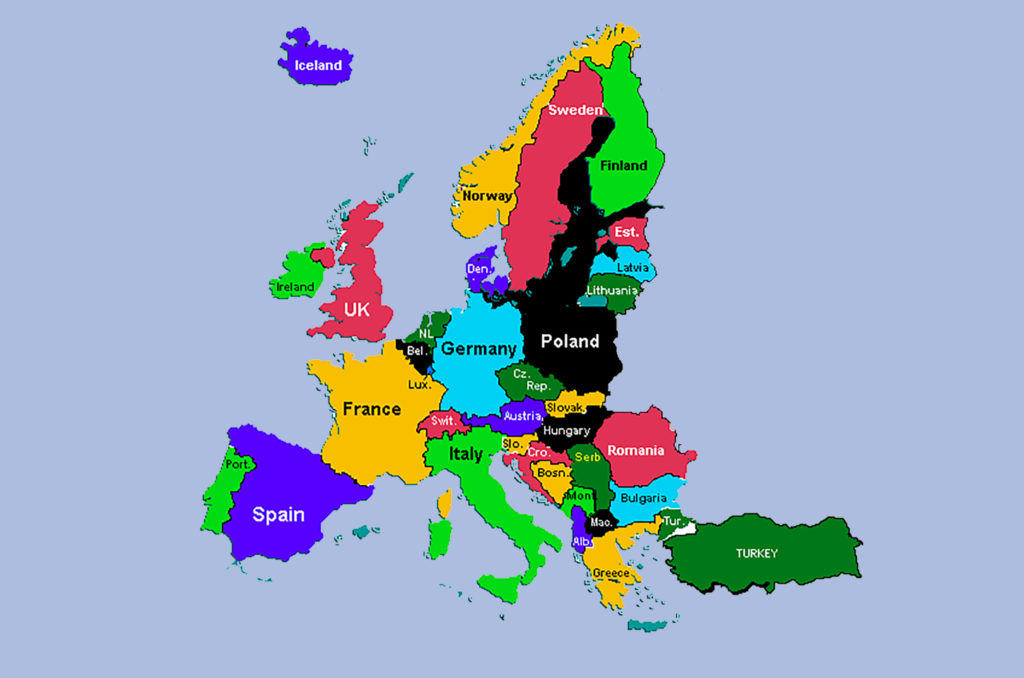

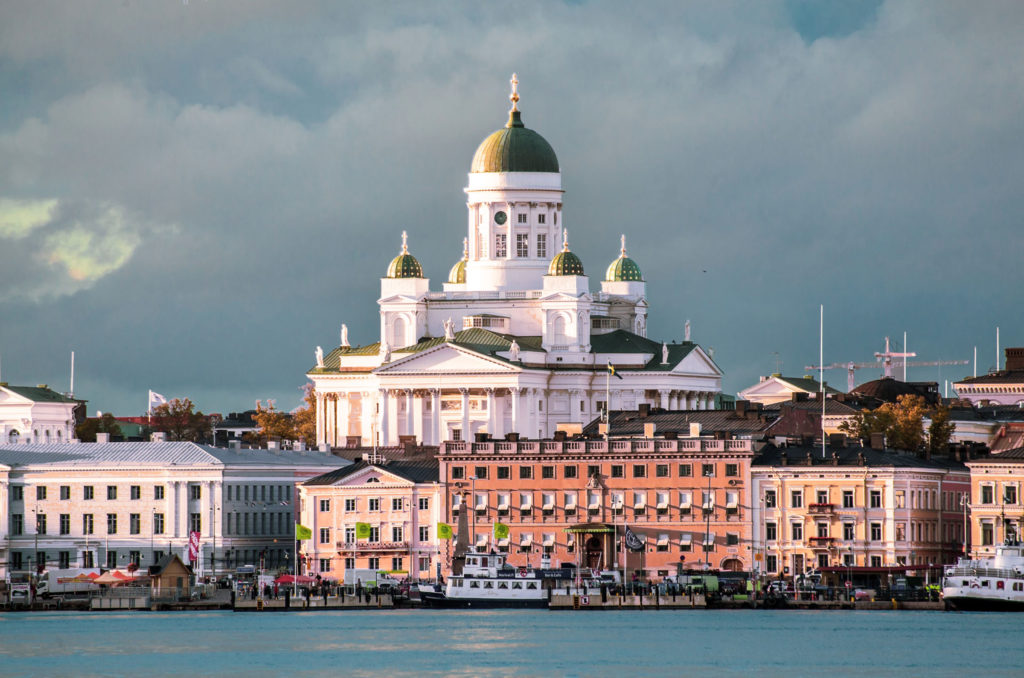
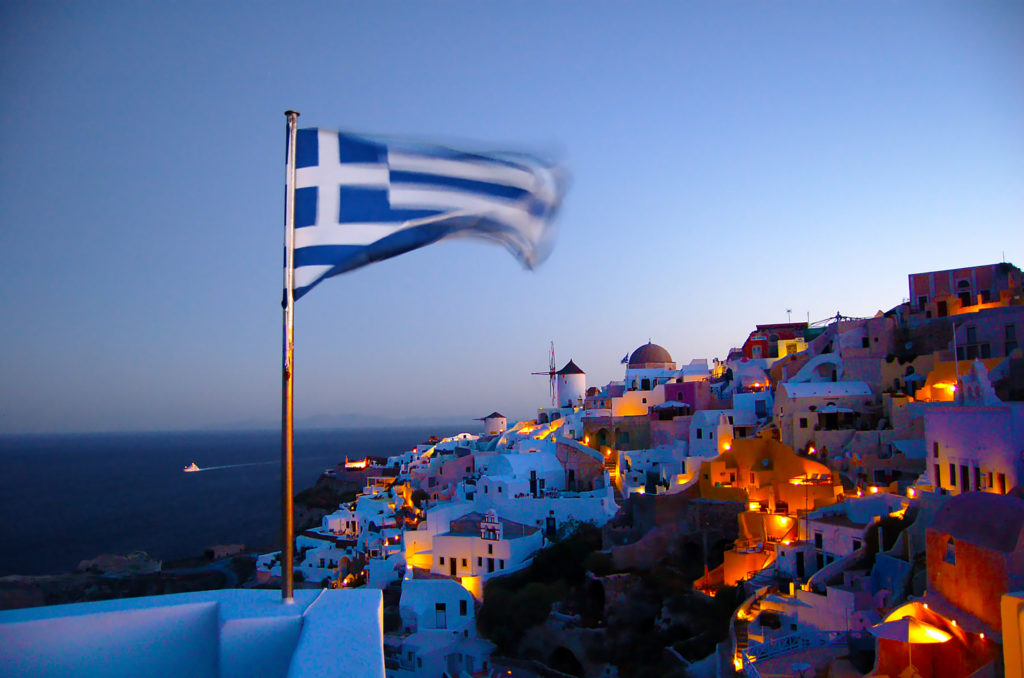


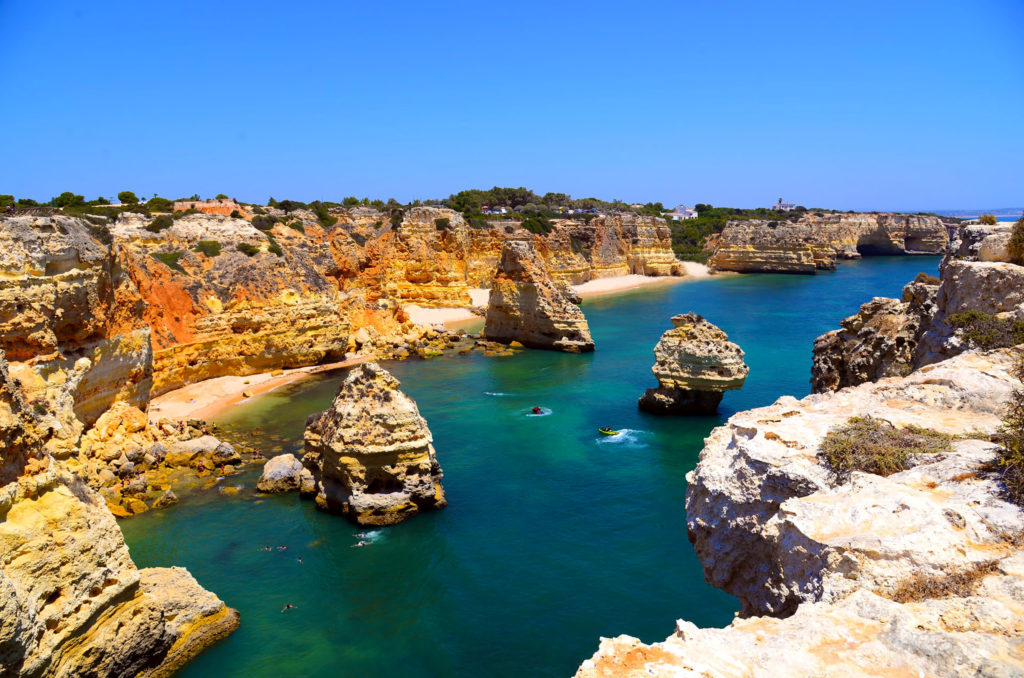
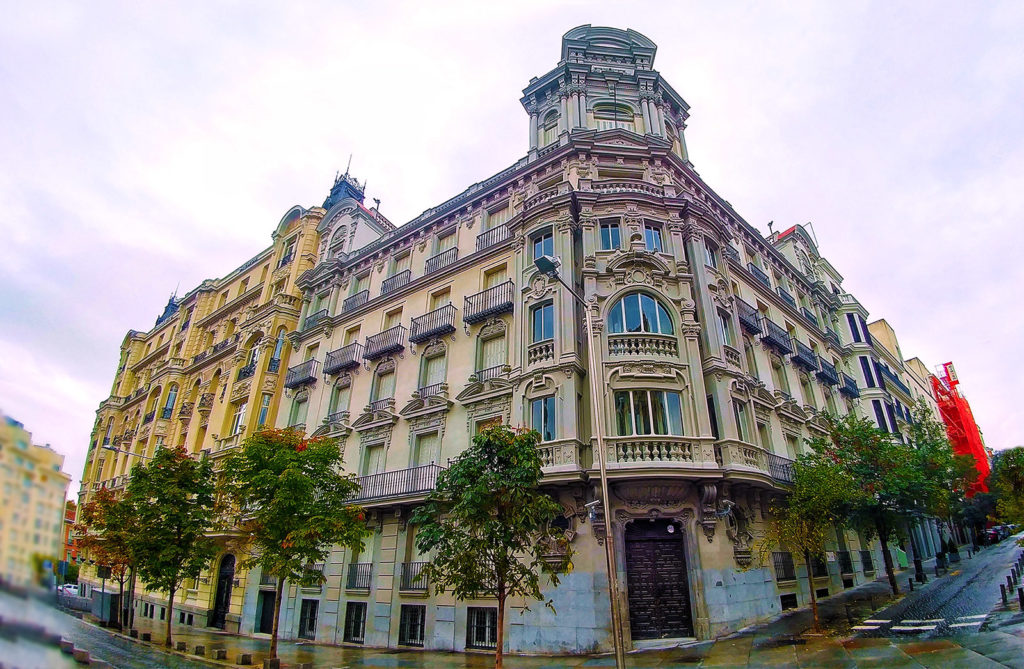

5 comments
Slovakia
After Liechtenstein, Luxembourg and Malta, Slovenia is the smallest Schengen state.
I mean this sentence should be under Slovenia country more likely than Slovakia.
Roman-
Thank you for the catch. I’ve edited the article accordingly.
Thanks for reading!
[…] those itching to go abroad, Point Me to the Plane recently published a guide to reopenings in Europe and associated travel restrictions by county. […]
So glad you mentioned the Hyatt Regency Belgrade in your post. We are here now, for our 5th visit to this lovely hotel. We’re going to stay until we re-up our Globalist status again (about 21 days). At about $100/night including a wonderful breakfast… it is a Hyatt lover’s dream – A gorgeous hotel for less than the price of a Hyatt Place in most cities.
A few things are different in these strange times – no lounge, and only 1 restaurant open… but the staff is still awesome, and you can use WOLT to get delivery for lots of additional food options.
Diane-
Glad to hear you appreciate the Hyatt Belgrade and seem to having a wonderful time. If you are in (or can get to Europe) it’s a fantastic time to enjoy the continent while the crowds are almost nonexistent.
Keep safe and thanks for adding to the conversation!